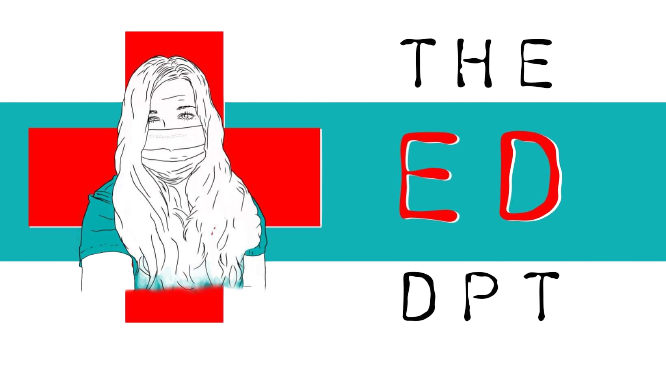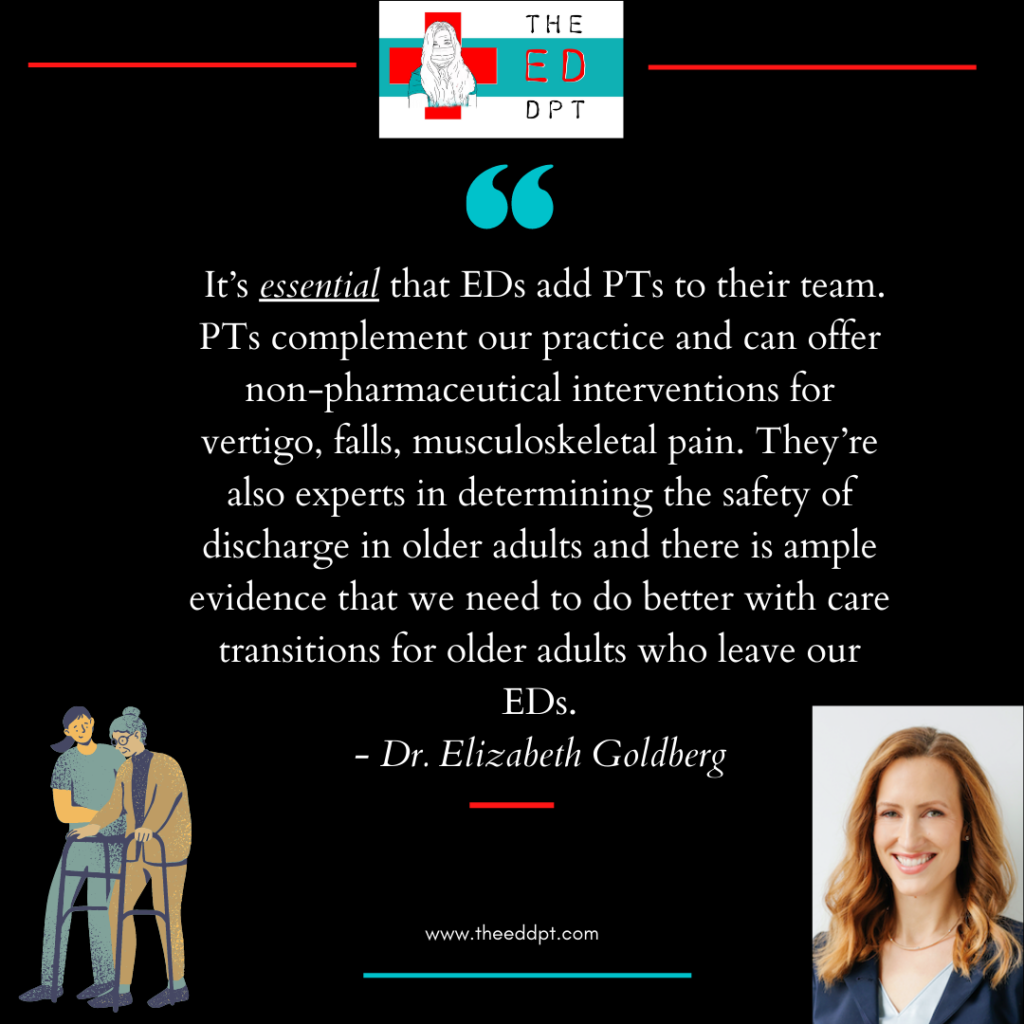Meet Dr. Goldberg, an Emergency Medicine Physician who is researching ways to fill the gap in care for the older adult population in the Emergency Department.

Bio: I’m an Associate Professor of Emergency Medicine and Health Services, Policy and Practice at Brown University. I received a Bachelor of Arts from Miami University of Ohio, a Doctor of Medicine from Tel Aviv University, and a Master of Epidemiology at Brown University. I completed residency training at Brown University and was chief resident. From 2015-2018 I completed the post-doctoral training program at the Center of Gerontology and Healthcare Research at the Brown School of Public Health.
In 2017 I was awarded a GEMSSTAR (Grants for Early Medical/Surgical Specialists’ Transition to Aging) Award, which funded GAPcare, an Emergency Department-based randomized controlled trial of a fall prevention intervention. With this intervention we brought together a multidisciplinary team of over thirty physical therapists and pharmacists and achieved a significant reduction in subsequent fall related ED visits among older adults.
I’m also the recipient of the Paul B. Beeson Emerging Leaders Career Development Award in Aging, which funds GAPcare II and combines a fall prevention intervention with the Apple Watch for the collection of digital cognitive and functional measures and improved fall outcome assessment. I led the Rhode Island state-wide implementation of EQUiPPED – Enhancing the Quality of Prescribing Practices for Older Adults Discharged from the Emergency Department after winning a pitch competition with Blue Cross Blue Shield Rhode Island to improve the Triple Aim. I created MyCOVIDRisk – a publicly available web-based app – to help people reduce their risk of COVID infection that has had over 1.3 Million uses to date. My specific areas of interest include improving care for older adults, digital health, and public health interventions to enhance longevity and healthy aging.
Tell us about your journey to becoming an Emergency Medicine Physician.
I always knew I wanted to take care of people across the lifespan and regardless of their type of medical concern. In emergency medicine our doors are always open and we truly see people regardless of ability to pay. I enjoy the puzzle work of determining the diagnosis and collaborating with a team of clinicians, staff, administrative folks.
Describe your practice setting and Emergency Department PT model.
Currently I practice at Brown University affiliated hospitals in Providence, Rhode Island. Rhode Island hospital is a level I trauma center that sees 100,000 ED visits per year. The Miriam Hospital is also in Providence, RI, but we see 80,000 ED patients per year. At the Miriam Hospital we see predominantly older adults.
Tell us a little about your current research around ED PT?
I designed an intervention called GAPcare (the Geriatric Acute and Post-acute fall prevention intervention). The idea of GAPcare came to me after talking to our case managers. They said we really need PT in the ED to help with our patients. They were mostly focused on needing PT to do assessments for a rehabilitation stay. But, I started looking into the falls research and saw that there was some emerging data that PTs and pharmacists should be part of fall prevention efforts.
Many fall prevention studies have failed to yield results. Usually, it’s because the older patients have barriers to getting to a falls clinic or don’t report their falls to their PCPs. I thought that it would be great if we could bring the fall team to the patient while they were waiting in the ED anyway. So, GAPcare starts during the ED visit for the fall and brings the PTs and pharmacists to the patient. They come up with recommendations to reduce future fall risk either by modifying medications or by suggesting ways to improve balance, lower extremity strength, or home environmental hazards.
How did you come to be involved in research around ED PT?
I realized that we needed to offer our patients with falls more than a trauma assessment. We really could figure out reasons for falls during the ED visit and by acting on these risk factors, we could reduce recurrent falls. PTs had to be part of the team because they’re experts in lower extremity strength, balance, assistive device use, discharge planning – things we aren’t traditionally trained in as emergency physicians.
Why do you think this is a valuable practice area?
Falls are common, preventable and costly. Each year about $50 billion is spent on medical costs related to non-fatal fall injuries and $754 million is spent on fatal falls. They’re the leading reasons for injury related ED visits for older adults. In 2019 we saw 3 million ED visits for older adult falls.
What would you say to an ED considering adding PTs to their team?
It’s essential that EDs add PTs to their team. PTs complement our practice and can offer non-pharmaceutical interventions for vertigo, falls, musculoskeletal pain. They’re also experts in determining the safety of discharge in older adults and there is ample evidence that we need to do better with care transitions for older adults who leave our EDs.
What barriers did you have to overcome personally and within your facility to facilitate a change in practice with the addition of PTs?
I was surprised how little we had to overcome. Our ED clinicians were excited to have the additional support evaluating and caring for our ED patients. We’ve learned a lot from our PTs. Sometimes it takes persuasion of the C suite to add personnel to the emergency department, but PTs can also help divert unnecessary admissions, can help older adults who need more supports qualify for SNFs, and all of those things help EDs run more efficiently. Most importantly we know patients benefit from their care.
What strategies for communication with the medical team do you find to be the most effective in this environment?
At my current practice site we use the EPIC chat feature to reach our PTs both for research and clinical care.
What was your biggest team win in the ED?
We’ve heard from patients’ caregivers that seeing a PT in the ED helped them anticipate what type of support they’d need to provide at home and helped them realize before they arrived home if their loved one had greater needs than they could meet. I think this is how we helped to avoid unnecessary ED visits for falls in the future.
Learn more from Dr. Goldberg!
You can find Dr. Goldberg on Twitter @LizGoldberMD. Itching for the full interview? Watch here or listen here. You can also throw it back and listen to Dr. Goldberg on PT Pintcast.
Resources
Continuing education to improve your practice with older adults in the ED here.
https://www.acep.org/geda/
https://aptageriatrics.org/sig/balance-falls-special-interest-group-bakup/falls-prevention-awareness-toolkit/

